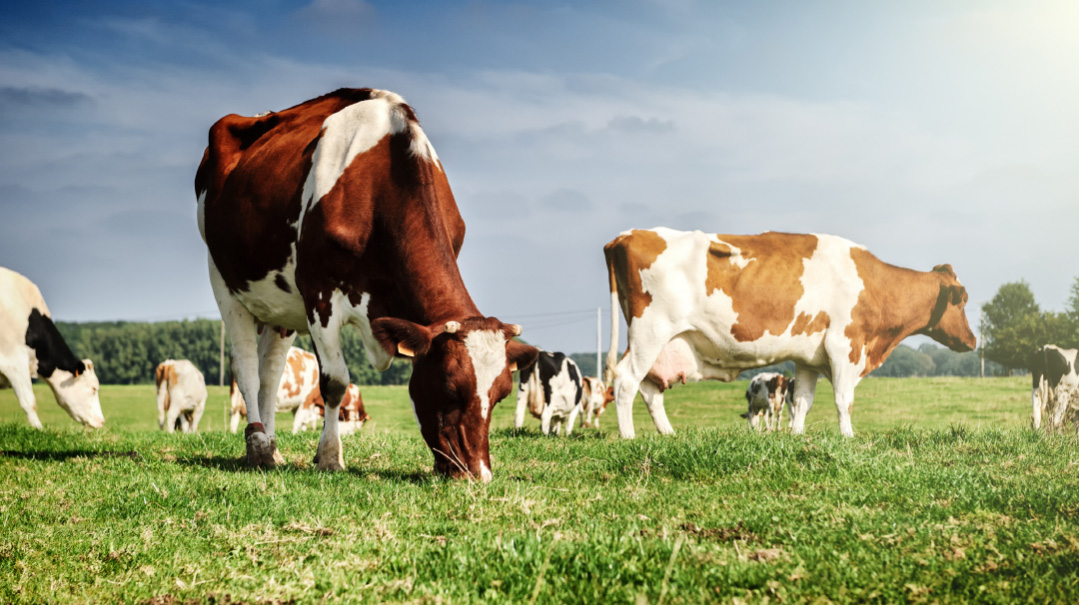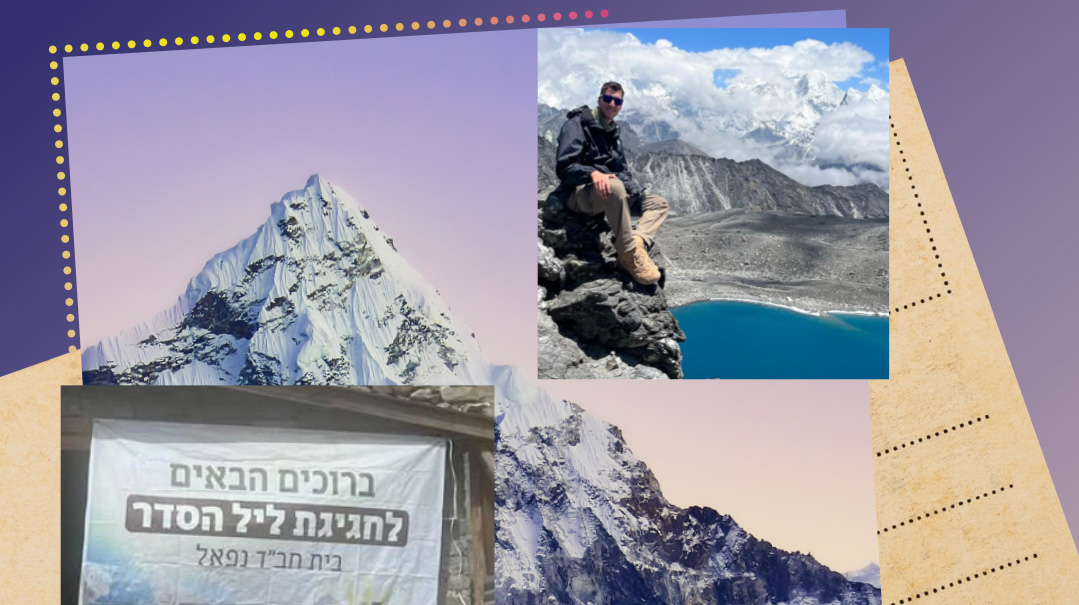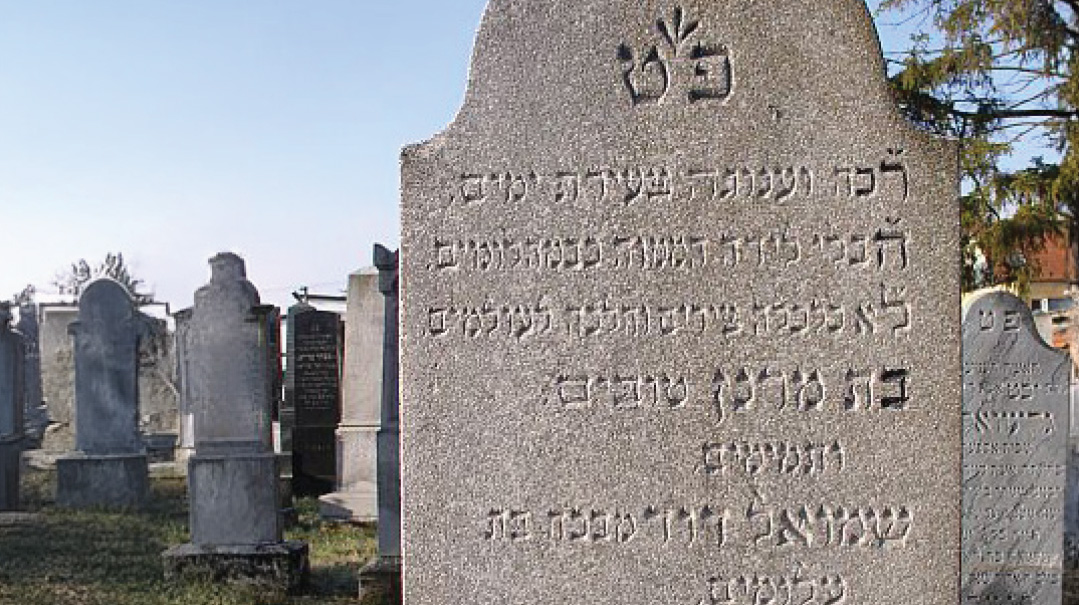Meet… Shani Ginsburg
| February 13, 2024Kollel wife, teacher, and creator of CattleQuants — an AI-based business counting animals on ranches around the world

Meet 35-year-old Shani Ginsburg. Kollel wife, teacher, and creator of CattleQuants — an AI-based business counting animals on ranches around the world.
AS far back as third grade, I loved medicine — but not the idea of being a doctor. Shuddering at the thought of telling a patient terrible news, instead I dreamed of discovering miraculous cures. My classmates jokingly referred to me as the one most likely to discover a cure for cancer!
The summer before seminary I had the opportunity to work in a biomedical research lab run by a frum doctor. The work — feeding cell cultures, testing cells’ responses to stimuli, and using rats and mice to study kidney disease — was incredibly stimulating, but I was disturbed when two women in the lab told me their children were being raised by nannies.
“We only see our kids on weekends,” they shared.
The job was extraordinary, but my dreams began to change. My vision of a kollel home didn’t include an absentee mother.
The only question: What should I do now?
Taking the Bull by the Horns
Going to seminary at BJJ in 2007 was a life-changing experience. Surrounded by fellow intellectuals, we wrestled with the looming question of the future.
“Where are you going in life?” our teachers asked us.
I struggled to find an answer.
Meaning, stimulation, and a chance to exercise my curiosity — that was what I craved. One of my friends brought up the idea of becoming an actuary. As a math lover, this sounded intriguing. The bonus? There was an excellent program at the University of Colorado, not far from where I lived.
Upon hearing my plans, Rebbetzin David a”h and Giveret Leibowitz insisted that I also teach a kodesh subject. I started small — four periods a week, and worked up to 14 periods, as well as being a dorm counselor at Bais Yaakov Denver. It was exhilarating, with teaching and college classes providing that perfect balance.
As part of my degree, I took a course called “Math Clinic,” where we applied math to everyday life. The professors taught us the basics of AI (this was in 2009!) and had us create AI programs to “read” CT scans and detect different diseases. Frankly, I thought they were insane; these AI programs seemed more magical than logical! Who had ever heard of teaching computers like that? In spite of myself, I was interested — and then hooked.
While taking “Math Clinic” and finishing up my Bachelor’s degree in Actuarial Science, I labored over long, boring actuary tests on financial math. It was so dull; it was difficult to study. It hit me suddenly — why continue this uninspiring subject when I could use AI and programming to do medical research?
I switched the focus of my master’s degree, received a stipend for research through one of my professors from the Math Clinic, who hired me to do research in the Oncology Department. I also helped teach a college class. One of the fascinating programs I produced was an AI program for the ER. The program analyzed X-rays of lungs, finding the ribs and “subtracting” them from the images, enabling ER radiologists to detect issues (e.g., nodules) that might otherwise be obscured by the ribs. This program, one of the earliest of its kind, inspired later programs that were FDA approved.
Getting a PhD was the next logical step to finding a good job in the field. I could pick a program in a specific school or choose a mentor. I wanted a challenging, encouraging professor who would take me to the next level. My superstar mentor turned out to be at Rutgers Piscataway campus. He was smart, motivated, and a high achiever.
This was also around the time I met my husband, who valued my ambition and love of knowledge. The funny thing is that he didn’t want to marry someone with “math smarts” — he had the stereotypical idea that anyone who loves math is logical and boring. Luckily, none of my references mentioned my math skills! As a newly married kollel wife, I was traveling from Lakewood to college every day. My mentor was amazing, really pushing me to achieve (sometimes he pushed so hard, I had to push back!).
My schedule became even more hectic after I had my first baby. Major Hashgachah, my mentor’s wife had her first baby a month before mine, so he was very understanding. Then he received a job offer in Cleveland, and if I wanted to continue my program with him, we would have to move. After asking a sh’eilah (daas Torah guided every step of the way) we were on our way to Ohio!
Until the Cows Come Home
Most of our customers are banks in the US, but we do a lot of business with Canadian customers in Alberta. We’ve dealt with cattle-rich South American countries like Colombia, Brazil, and Argentina. South Africa is suffering from a lot of cattle theft and they’re showing a lot of interest in CattleQuants. We’re trying to attract more government work in the US, counting endangered animals. Recently, we’ve even counted kangaroos and wallabies for the Australian government!
Parnassah comes from Hashem, and even though this is a technology-based company, I don’t use Facebook or social media, except for LinkedIn. We contact customers via phone or email. I used to have WhatsApp, but since the new updates, I’m not comfortable using it. For now, my husband helps me with the customer service/advertising end of things, but the schedule is flexible enough that he still learns mornings and evenings in kollel.
My ultimate dream? To grow and improve CattleQuants, delegate the boring aspects of work (writing reports!), and allow my husband to learn full-time.
I want people to realize that there is so much opportunity in today’s world for innovation and creativity. Almost any talent can be turned into a unique form of parnassah that will be both satisfying and supportive of a Torah home. Looking back, I see how Hashem led me to this one-of-a-kind job — creating this niche for my specific needs and talents — and the depth of gratitude takes my breath away.
Where’s the Beef?
With my husband in full-time kollel, it was time to start looking for a job. For a short time, I worked for a drone company that was trying to market its services to farmers. They wanted me to provide their customers with a tool to count corn, for farmers trying to predict profits. I created an AI program that “read” pictures of cornfields taken by drones. I also did a four-year stint at a medical software company. Cancer patients need very targeted radiation, but the planning process can be time-consuming and it’s easy to make mistakes. My program made it simpler and quicker, and I loved that my creative work was having a real-world impact in hospitals.
But I wanted more — a job that would keep my husband in kollel, use my talents, let me be a mother, and support our growing family. My husband encouraged me to start my own company.
When I’d worked on counting corn, farmers kept asking: “Can you count cattle?”
I decided to try.
And thus the idea for CattleQuants was born.
Bullseye!
Cows munching grass don’t look exciting, yet each cow is worth over $2,500.
But who needs to count them?
Feedlots, where cows are raised for slaughter, are constantly shipping cattle to processing plants. Counting cattle before shipping avoids arguments with suppliers.
Big cattle ranches typically take out loans when buying thousands of cattle to raise each year. They plan on paying back the money after selling their cattle. Banks need to know if these loans will be profitable, so they count how many cattle are actually on these ranches before finalizing the deal. If a ranch claims 500,000 cattle, but only has 450,000, the difference amounts to millions lost, so CattleQuants works really well for them.
Smaller ranches are always guarding against theft. It’s not easy to count animals scattered over a huge amount of land, so we count their cattle on a regular basis, keeping track of the numbers.
The AI program I created had to be “taught” to recognize every type of cow. Drones (owned by licensed drone pilots, or belonging to the ranch/company) fly over an area and take photos. The program counts the cattle quickly and efficiently and creates an analysis report documenting every animal present.
CattleQuants can also count bison (we’ve done bison ranches!), sheep, horses (like wild mustangs, a protected species in some national parks), birds, and even kangaroos!
Talents unrelated to math or computers?
Puzzles, baking, and painting.
What’s something you would never give up?
I teach 12th grade Mishlei, and it’s the part of my day that rejuvenates me. I would love to teach more and work less!
Favorite 15 minutes of your day?
Every day I try to spend 15 special minutes with each of my five children kein ayin hara.
(Originally featured in Family First, Issue 881)
Oops! We could not locate your form.







